School in the Cloud: This Solar Powered Virtual School Is Helping Kids Learn in Sunderbans
TED 2013 Prizewinner Sugata Mitra’s first independent, solar-powered learning lab is making learning fun in this small village located in the mangrove swamps of Sunderbans.
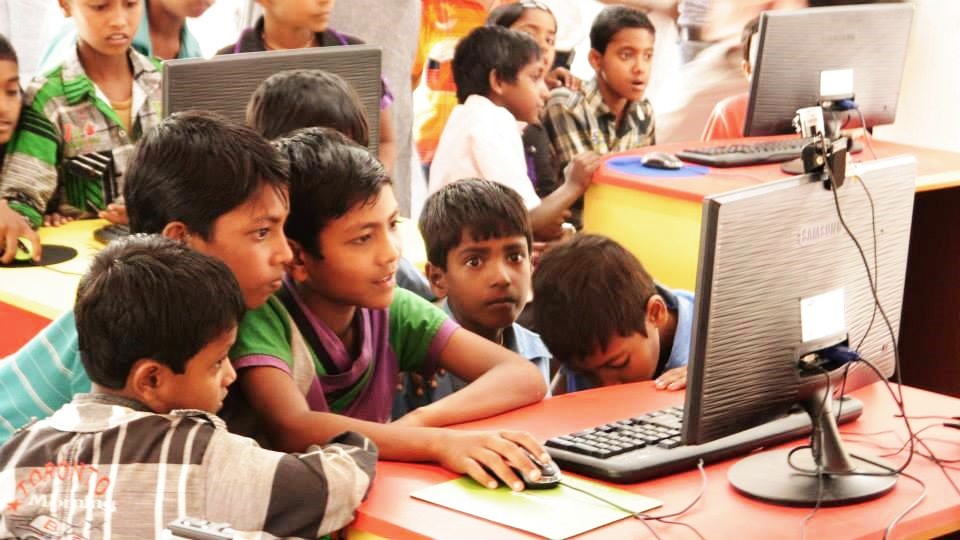
Located about 110 kms from Kolkata, Korakati lies deep inside Sunderbans, a mangrove forest with a complex network of streams, rivers, creeks and channels that rise and ebb with the tidal flow of the Bay of Bengal. The village economy is primarily dependent on fishing, paddy farming and harvesting forest produce, but most residents live below the poverty line.
This village is hardly the kind of place most people would seek out to try and build a high-tech learning lab. But then again, Professor Sugata Mitra is not most people.
Today, Sugata Mitra’s first independent, solar-powered learning lab, School in the Cloud, is making learning fun in this small village located in the mangrove swamps.
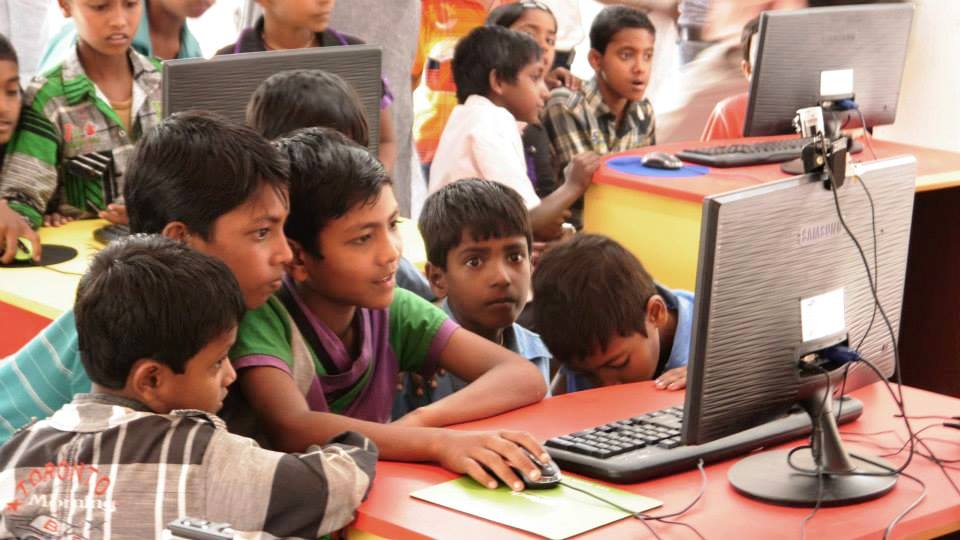
Photo Source
In 1999, Professor Sugata Mitra was the chief scientist at NIIT when he set up the first ‘hole in the wall’ learning lab for street children. In the experiment, he placed an internet enabled computer in a Delhi slum and left it there to see whether children from the area would acquire basic computer skills if left on their own with the computer. To his surprise, groups of street children, with no knowledge of English, taught themselves not only how to use the computer but also a new language.
Fourteen years of research since then continue to support his startling results — groups of children, with access to the Internet, can learn almost anything by themselves. This experiment later came to be known as ‘Hole in the Wall’ and won Mitra the TED Prize in 2013.
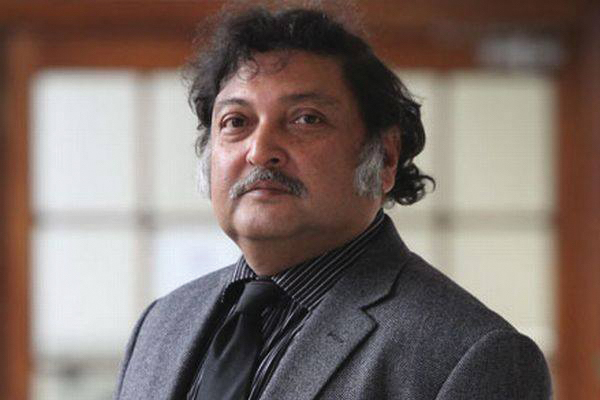
Photo Source
In February 2013, a local schoolteacher from Korakati travelled to Kolkata, crossing miles of rugged terrain on a rickshaw, in order to meet the education pioneer face-to-face. Talking to TED, Mitra said:
“Early one morning in February 2013, a man turned up on my doorstep who had travelled through the night to get there. This schoolteacher wanted to do something positive for his village, which had no electricity, health care or primary education … It was just the kind of place I was looking for.”
It didn’t take much to convince Mitra that Korakati would be the perfect spot to build a School in the Cloud. It would be the fourth of the 7 Self Organised Learning (SOLEs) locations that he planned set up under his $1 million TED Prize-funded project on non-conventional education for children. The project partners also included, among others, UK’s Newcastle University, where Mitra was a professor of educational technology, and software giant Microsoft.
Self-Organised Learning Environments (SOLEs) are learning labs where children can explore, learn and search for answers by tapping into online resources. Not only does this project improve children’s reading comprehension and search skills, it also enables them to draw rational and logical conclusions.
Through this platform, children also get to interact with online ‘grannies’ to engage in a wide range of informal activities; ‘grannies’ are a group of retired teachers (mostly from UK) who are available over Skype to help mentor and guide the children as they explore information.

Photo Source
Professor Mitra, who wants to inspire learning through self-instruction and peer-shared knowledge, said:
“What we are looking at is minimally invasive learning, and not unguided learning. Until it can replace the conventional learning system, it can complement it.”
Korakati’s School in the Cloud is also a SOLE. But unlike other SOLEs that are attached to schools, the one at Korakati is the the first to be a stand alone model.
Nestled between traditional village huts, fields and mangrove swamps, the stark learning lab stands out against the lush backdrop like a cloud.
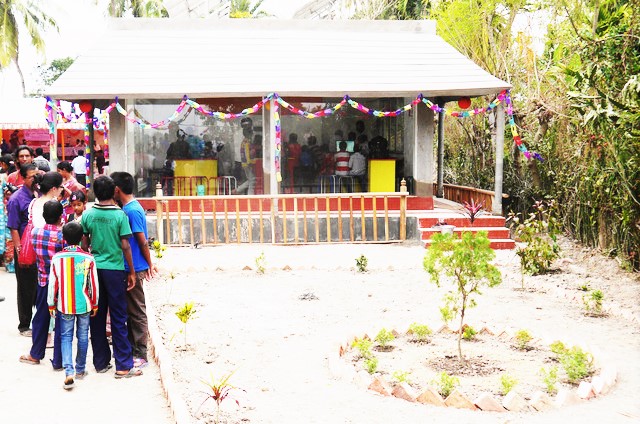
Photo Source
The remotest SOLE ever built, it had to be equipped with a 40 feet bamboo tower receiver in order to get the necessary data bandwidth for Internet. Constructed on land donated by a local schoolteacher, the school-cum-lab has around 150 local students from all over Sunderbans, including 49 regular ones whose activities and development are documented for research by two local coordinators. Some students walk to school and some cycle over 10 km to attend the classes.
Ritu Dangwal, the project coordinator of School in the Cloud, said:
“It was our effort to see whether we can leverage technology for learning in a largely tribal, underprivileged belt; if our model can work in the Sunderbans, it’ll work anywhere.”
The children at Korakati use the Internet to learn many things with help from the ‘grannies’. For example, the children have taught themselves origami using YouTube, helped by a ‘granny’ on Skype. A day at the school also includes sessions where a question is posed to the children who have to then surf the Internet for answers. The children gather into groups and access sites such as thescientificamerican.com and verywell.com through Google. They then translate difficult English words into Bengali using Google Translate before jotting down important points for their answers. The coordinators don’t intervene in the search at all!
As a result, students of the Korakati School in the Cloud have shown remarkable improvement in English speech, reading, comprehension, Internet literacy, collaboration, and consensus-building. Motivated by curiousity and peer interest, these children are teaching themselves and each other. This is far ahead of what is expected of them in a regular school curriculum!
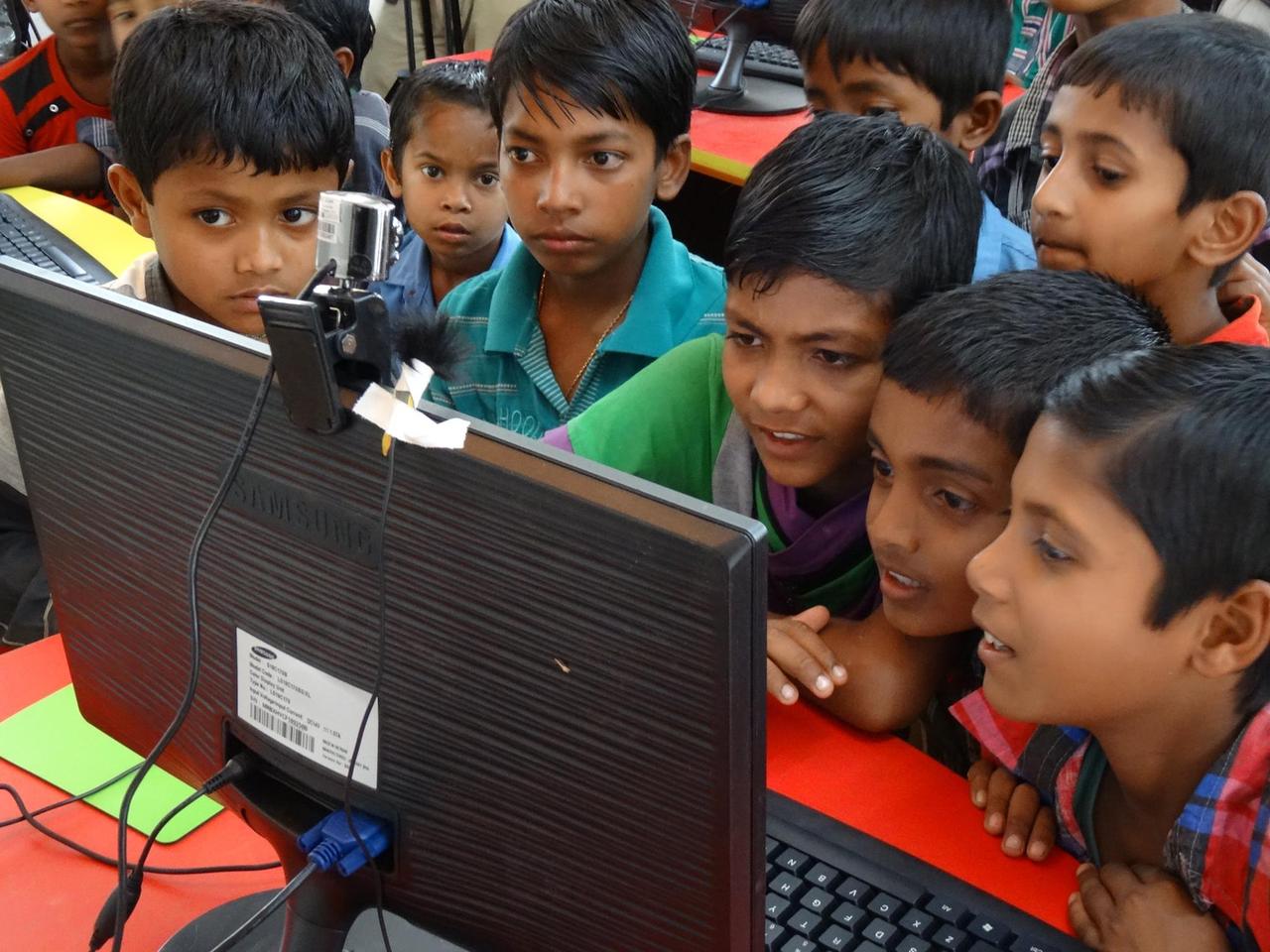
Photo Source
Interestingly, the impact of the virtual school and ‘granny’ sessions is very visible, not only on the children but even on the local Bengali coordinators; the proof lies in their improved English speaking skills.
Korakati’s School in the Cloud has been embraced by the locals of Sunderbans with open arms and a sense of nervous anticipation for what is to come. When asked by the members of the School in the Cloud team about their virtual school, this is what the children said:
“We feel that we come to a temple when we come to this school. In front of this school, there are flowering plants. And we love to see them. We want to come everyday. There are fireflies on a big bokul tree, which we can see at night. We can learn new things and see new things. We also like to talk to the people from overseas. We had fun with the granny who came here but we could not understand what she was saying in English. However, we will try to understand and learn.”
By helping the children of Sunderbans engage and connect with information and mentoring online, Sugata Mitra’s School in the Cloud project has taken another giant step towards its dream of encouraging and supporting children all over the world to tap into their innate sense of wonder.
Also Read: MY STORY: How a High Schooler Used English to Change Lives in an Entire Village
Like this story? Have something to share? Email: [email protected], or join us on Facebook and Twitter (@thebetterindia). To get positive news on WhatsApp, just send ‘Start’ to 090 2900 3600 via WhatsApp.
If you found our stories insightful, informative, or even just enjoyable, we invite you to consider making a voluntary payment to support the work we do at The Better India. Your contribution helps us continue producing quality content that educates, inspires, and drives positive change.
Choose one of the payment options below for your contribution-
By paying for the stories you value, you directly contribute to sustaining our efforts focused on making a difference in the world. Together, let’s ensure that impactful stories continue to be told and shared, enriching lives and communities alike.
Thank you for your support. Here are some frequently asked questions you might find helpful to know why you are contributing?


This story made me
-
97
-
121
-
89
-
167













